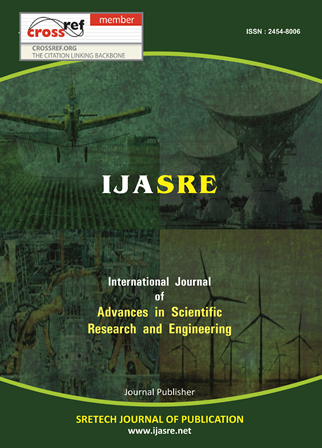Comparative Liming Power of Chicken Manure and Selected Dolomitic Sources on an Acidic High Altitude Burundi Surface Soil
DOI:
https://doi.org/10.31695/IJASRE.2024.6.5Keywords:
Biomass, Chicken manure, Dolomite, Liming power, pH valueAbstract
A research initiative was set up to evaluate the comparative liming power of locally available dolomitic products and chicken manure, using an amaranth (Amaranthus viridis L.) test crop. The soil used was acidic, of low % base saturation and risks of Al toxicity, and deficient in available P, exchangeable Mg, Ca, and K. The experimental setup was a completely randomized design with 11 treatments and 3 replicates which included: a control treatment (equivalent to 100 kg DAP/ha), 4 mineral amendments (Moso Lime, Moso Ground Dolomite, Bubanza Ground Dolomite and Busiga Ground Dolomite) applied at equivalents of 1 T/ha and 2 T/ha, and chicken manure applied at equivalent of 10 and 20 T/ha. The study duration was three months with three test crop harvests at one-month interval. Monthly measured plant growth and production parameters were plant height, root length, shoot length, root biomass, shoot biomass and their summation (total biomass). Soil pH, available P and exchangeable acidity (Al3+ + H+) were assessed at the start and the completion of the pot study. Obtained results could be summarized as follows : (i) the highest available P accumulation was associated with the equivalent of 20 T/ha of chicken manure ; (ii) application of equivalents 20 T/ha of chicken manure, 2 T/ha Moso Ground Dolomite and 2 T/ha Moso Lime increased soil pH by 0.2 to 0.5 pH-units and reduced exchangeable acdity ; (ii) DAP fertilized treatment was characterised by the lowest pH value and the highest Al3+ and H+ exchangeable acidity, illustrating the acidifying effect of this NH4+-bearing fertilizer ; (iv) amarant growth (root and height) and biomass (root + shoot) production were highest with 20 T/ha chicken manure, 2 T/ha Moso Ground Dolomite and 2 T/ha Moso lime. The application rate was only statistically detectable for Moso Ground Dolomite (+ 162 %) and chicken manure (+ 182 %). Overall, 20 T/ha chicken manure showed the highest and most stable amaranth root + shoot biomass yields, demonstrating its potential residual effect, which should be evaluated and confirmed under field conditions.
Downloads
How to Cite
Issue
Section
License
Copyright (c) 2024 KABONEKA Salvator, NDAYISHIMIYE Dieudonné, NIBASUMBA Anaclet, BIZIMANA Syldie

This work is licensed under a Creative Commons Attribution-NonCommercial 4.0 International License.








